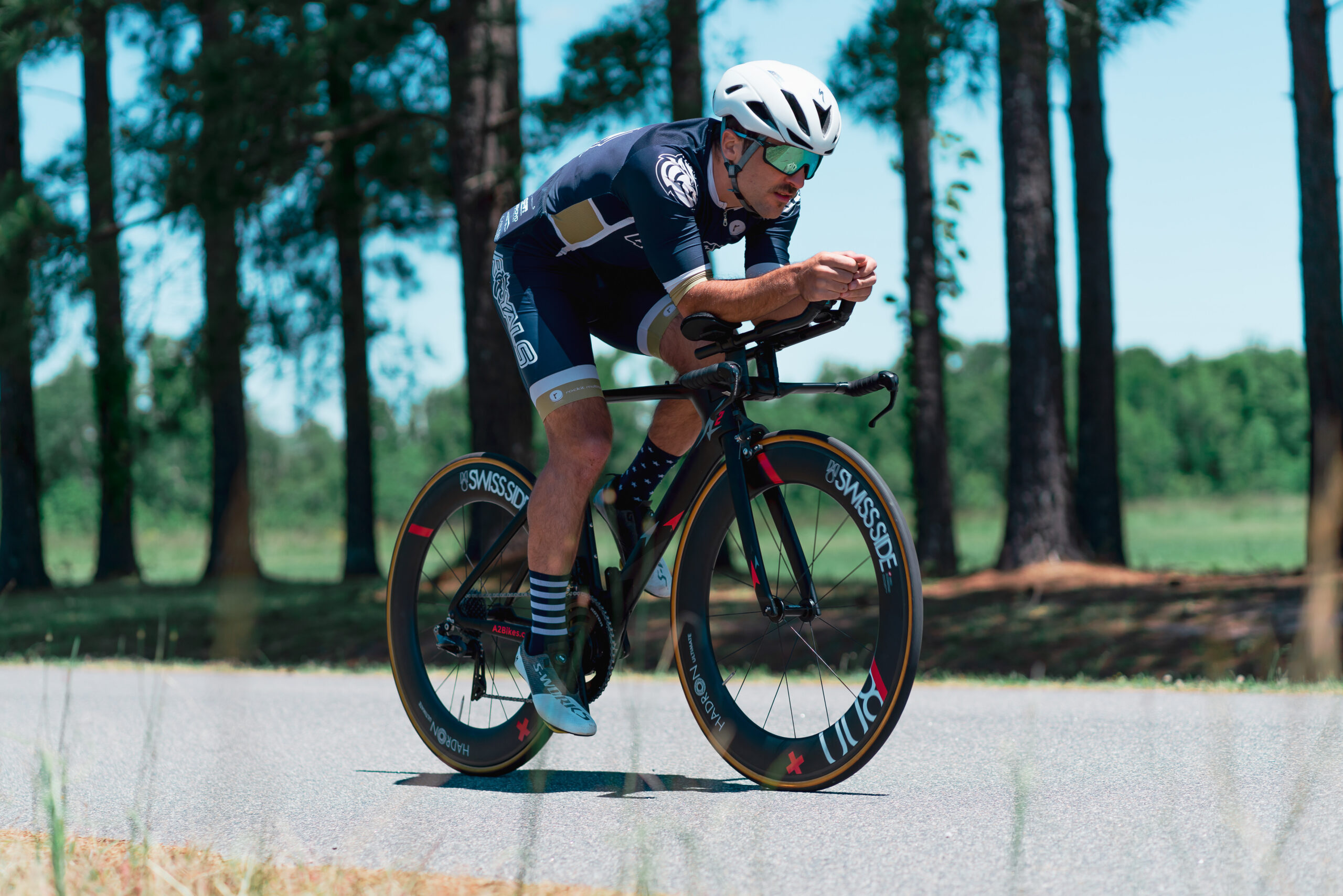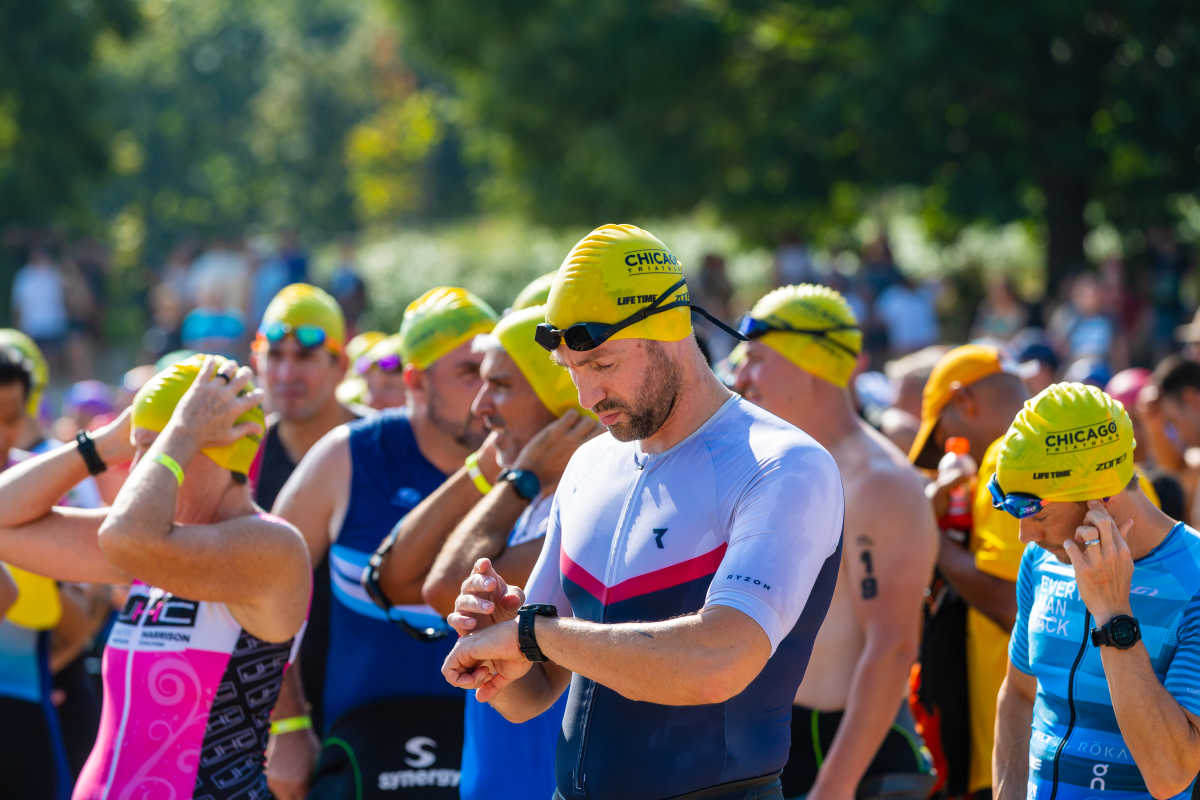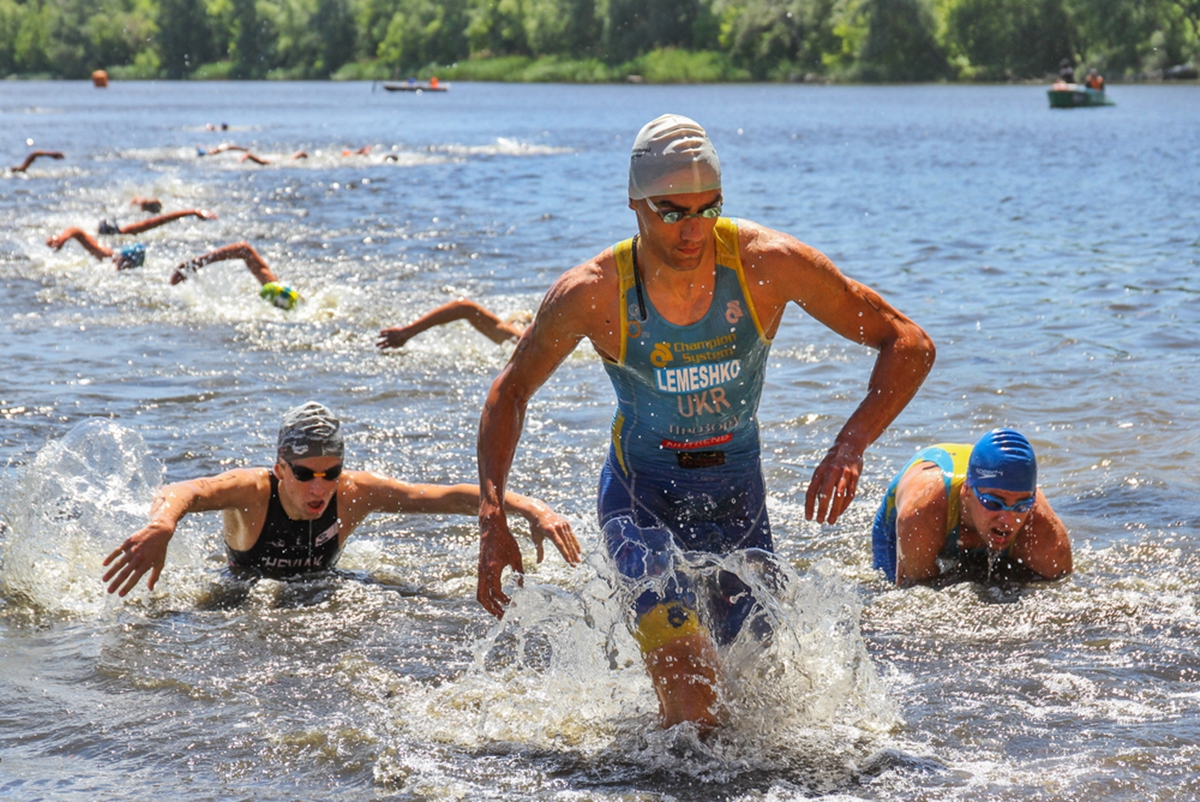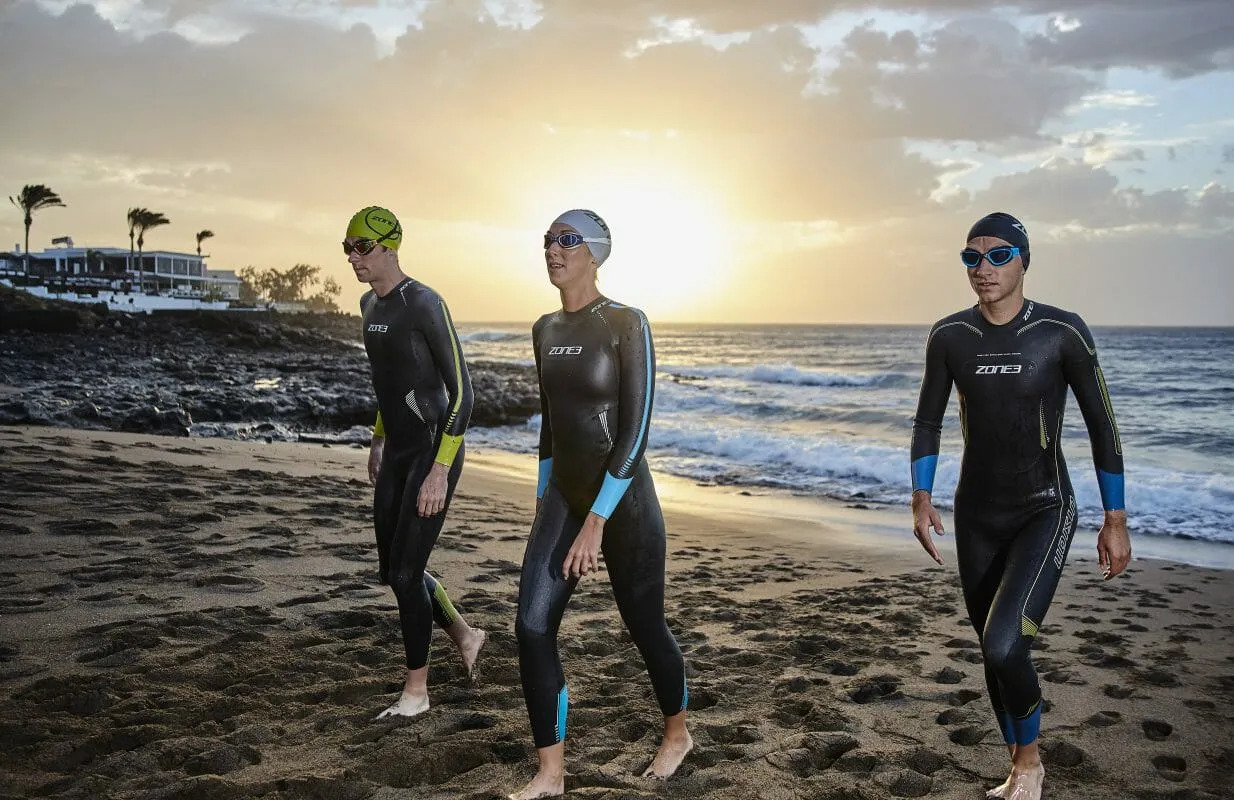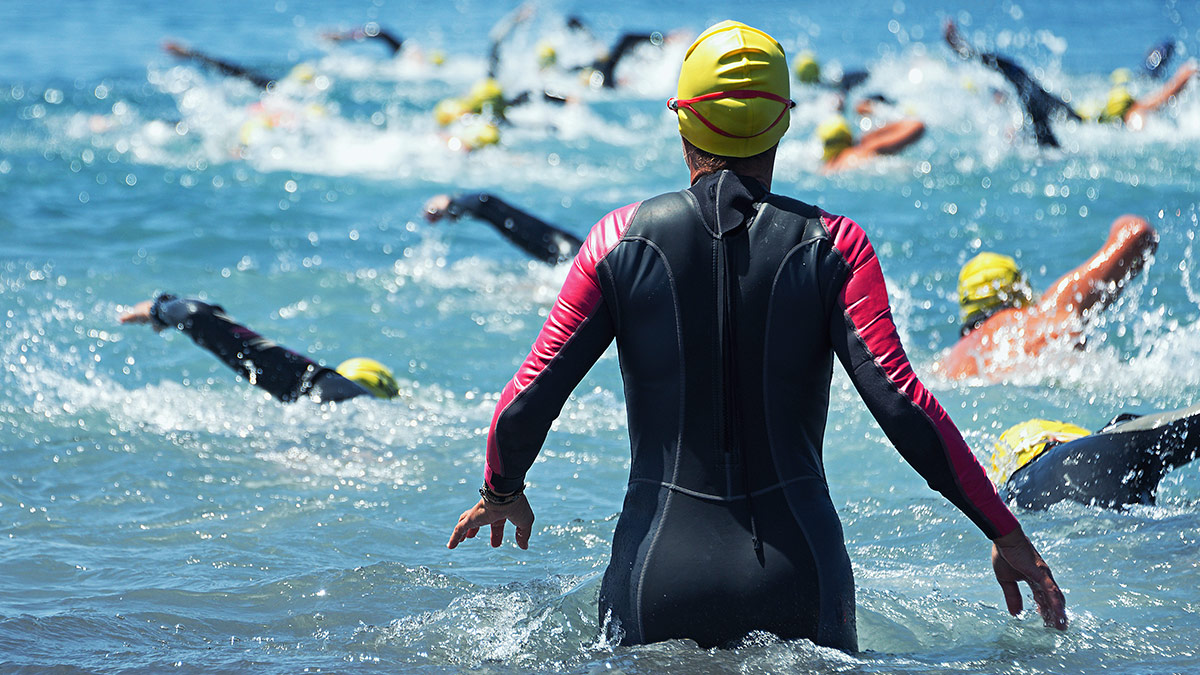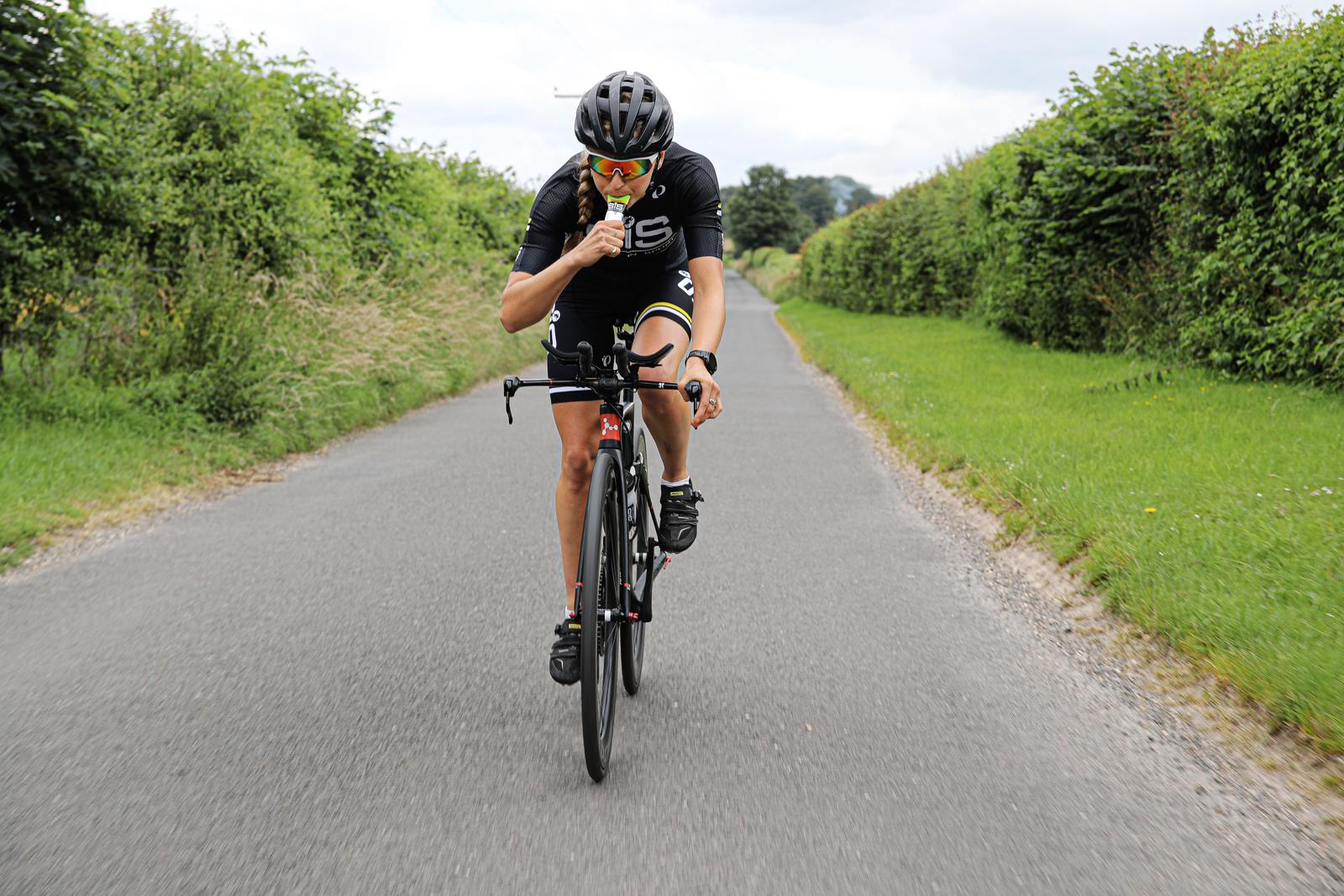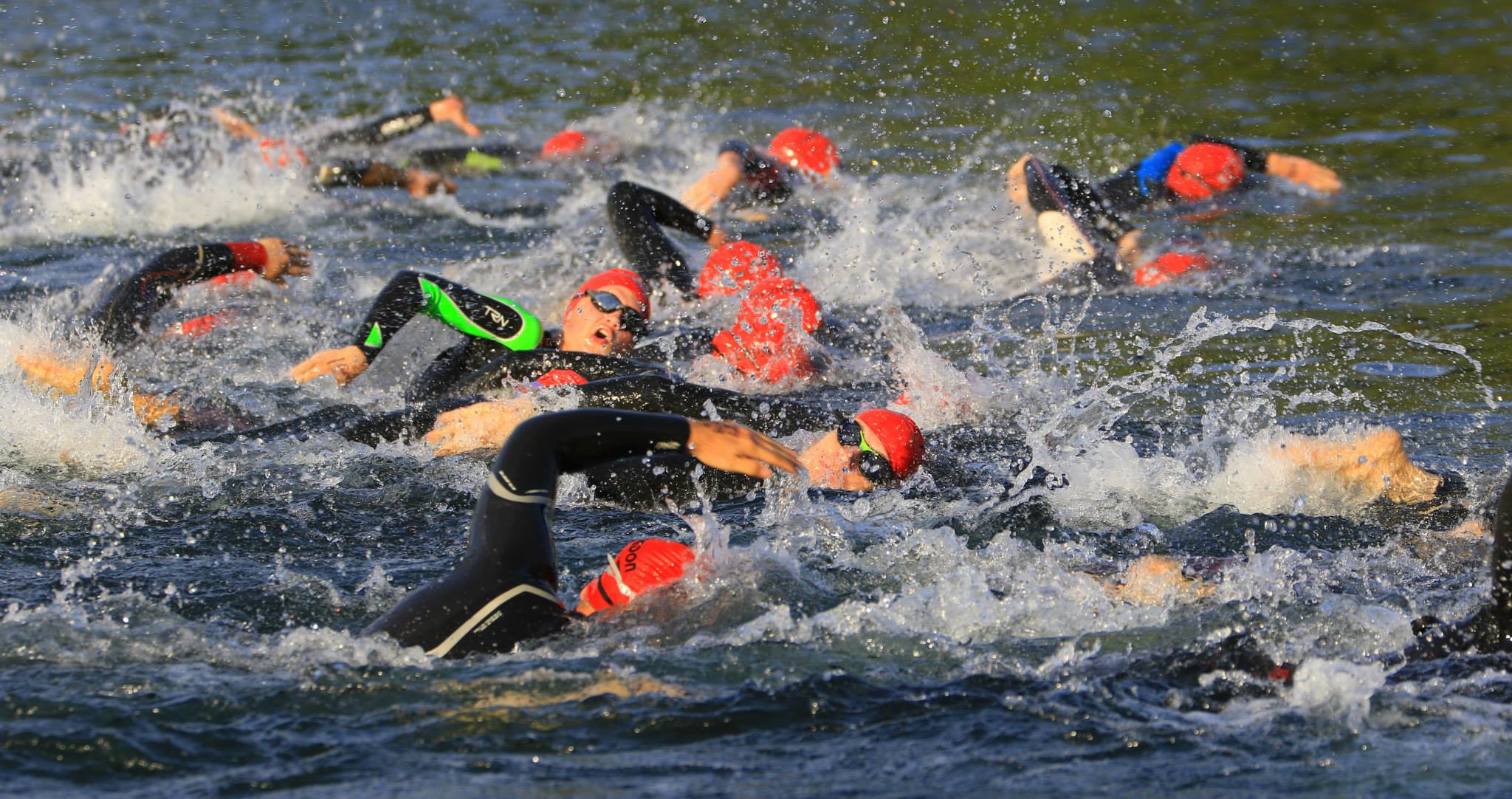

Featured
How Much Swimming In A Triathlon
Modified: August 21, 2023
Get featured in the triathlon with this guide on how much swimming is involved. Learn the key factors and tips to maximize your performance.
Introduction
Welcome to the world of triathlons, where endurance, skill, and determination come together in the ultimate test of athletic ability. One of the three disciplines that make up a triathlon is swimming. Swimming in a triathlon not only challenges your physical strength but also tests your mental fortitude. Whether you are a beginner or an experienced triathlete, understanding the importance of swimming in a triathlon is essential to your success.
Swimming is the first leg of a triathlon and sets the tone for the rest of the race. It is crucial to establish a solid foundation in swimming to enter the other disciplines with confidence. Proper technique, stamina, and speed are key factors that will contribute to your overall performance in a triathlon.
Triathlon swimming requires a unique set of skills and techniques compared to swimming in a pool. Open water conditions, including currents, waves, and visibility, add an additional level of complexity to the race. Therefore, it is important to train specifically for triathlon swimming to overcome these challenges.
In this article, we will explore the importance of swimming in a triathlon, the benefits it offers, and how much swimming you should do in your training. We will also discuss the factors to consider in determining the swimming distance for your triathlon and provide tips on how to improve your swimming skills. Additionally, we will highlight common mistakes that triathletes make in the swimming leg and offer suggestions to avoid them.
Whether you are a seasoned triathlete looking to improve your swimming performance or a newbie preparing for your first triathlon, understanding the role of swimming in a triathlon and optimizing your training can make a significant difference in your overall race experience. So, let’s dive in and explore the world of swimming in a triathlon!
The Importance of Swimming in a Triathlon
Swimming plays a crucial role in a triathlon, and its significance should not be underestimated. It is not only the first discipline of the race but also sets the tone for the rest of the event. Here are some key reasons why swimming holds such importance in a triathlon:
- Starting Strong: Swimming is the initial leg of a triathlon, and a strong start can provide a psychological advantage throughout the race. It allows you to position yourself well in the pack and avoid getting caught up in the congestion of other swimmers. A confident and efficient swim can boost your overall race performance.
- Building Stamina: Swimming is a full-body workout that engages multiple muscle groups and improves cardiovascular endurance. As the first leg of the triathlon, it warms up your body, increases your heart rate, and prepares you for the subsequent disciplines of cycling and running.
- Developing Technique: Swimming requires proper technique to minimize drag and maximize efficiency. Practicing and refining your swimming technique not only improves your speed but also helps conserve energy for the cycling and running legs. Good technique allows you to swim smoothly through the water, reducing resistance and fatigue.
- Overcoming Open Water Challenges: Unlike pool swimming, triathlon swimming takes place in open water. Navigating through currents, waves, and limited visibility poses unique challenges. By incorporating open water swims into your training, you can develop the necessary skills to handle these conditions effectively. This preparedness will increase your confidence and overall performance on race day.
- Mental Toughness: Swimming in open water requires mental resilience and adaptability. Overcoming anxiety, maintaining focus, and staying calm amidst competitive surroundings are vital skills in triathlon swimming. Building mental fortitude during training translates into improved performance on race day.
As you can see, swimming in a triathlon is not just about completing the distance; it is about starting strong, building stamina, mastering technique, and developing the mental toughness required to overcome challenges. Understanding the importance of swimming and incorporating it strategically into your triathlon training will undoubtedly lead to a more successful race outcome.
Benefits of Swimming in a Triathlon
Swimming in a triathlon offers a multitude of benefits that extend beyond just completing the race. Here are some key advantages of including swimming in your triathlon training:
- Low Impact, High Cardiovascular Workout: Swimming provides a low-impact cardiovascular workout that effectively strengthens your heart and lungs without putting excessive stress on your joints. It is an excellent way to improve your cardiovascular fitness while minimizing the risk of injury.
- Full-Body Conditioning: Swimming engages your entire body, utilizing muscles from your arms, legs, core, and back. It builds strength, endurance, and flexibility, contributing to overall muscular balance and body conditioning.
- Improved Breathing Techniques: Swimming requires controlled breathing, which can enhance your lung capacity and improve your ability to regulate your breath during the race. Proper breathing techniques learned in the pool can carry over to the cycling and running legs of the triathlon.
- Enhanced Mental Focus: Swimming in a race setting, especially in open water, demands concentration and mental fortitude. Regular swim training can help improve your mental focus, allowing you to maintain composure and make strategic decisions during the race.
- Weight Management and Stress Reduction: Swimming is an excellent calorie-burning exercise that can contribute to weight loss and weight management. Additionally, the rhythmic movements and water immersion can have a calming effect, reducing stress levels and promoting overall well-being.
- Increased Confidence: Swimming in a triathlon can boost your self-confidence and self-belief. As you conquer the challenges of open water swimming and witness improvements in your technique, speed, and endurance, you’ll develop a sense of accomplishment that extends beyond the triathlon.
By incorporating swimming into your triathlon training, you not only improve your physical fitness but also cultivate mental resilience, discipline, and confidence. The benefits of swimming extend far beyond the race itself, contributing to an overall healthier and more fulfilling lifestyle.
How Much Swimming Should You Do in Training?
Determining the appropriate amount of swimming to include in your triathlon training depends on several factors, including your skill level, race distance, and time constraints. Here are some factors to consider when determining your swim training volume:
- Skill Level: Beginners may need to focus more on technique and gradually build endurance, while experienced swimmers can dedicate more time to higher-intensity workouts. Adjust your training volume based on your current swimming abilities.
- Race Distance: The swim distance varies across different triathlon distances. Sprint triathlons typically have a 750-meter swim, while Olympic-distance races feature a 1.5-kilometer swim. Half Ironman events involve a 1.9-kilometer swim, and full Ironman races consist of a 3.8-kilometer swim. Adapt your training volume to reflect the distance you’ll be covering on race day.
- Time Availability: Consider the time you can realistically commit to swim training each week. Balancing your training with work, family, and other responsibilities is crucial to avoid burnout and maintain consistency.
- Goals and Priorities: Determine your goals for the triathlon and prioritize your swim training accordingly. If you struggle with swimming but excel in cycling and running, you may need to allocate more training time to swimming to bridge the gap.
While there is no one-size-fits-all answer to the question of how much swimming you should do in training, here are some general guidelines:
- Beginners: If you are new to swimming, start with 2-3 swim sessions per week, focusing on technique and gradually increasing distance and intensity. Aim for around 1500-2000 meters per session.
- Intermediate: For intermediate swimmers, aim for 3-4 swim sessions per week, including a mix of technique-focused drills, endurance sets, and speed intervals. Increase your distance gradually, aiming for 2500-3000 meters per session.
- Advanced: Advanced swimmers can aim for 4-5 swim sessions per week, incorporating a variety of training styles, including threshold sets, speed work, and open water practice. Aim to swim 3000-4000 meters per session, focusing on quality over quantity.
Remember, it is important to listen to your body and avoid overtraining. Consistency, gradual progression, and quality training sessions will yield better results than excessive volume without proper recovery. Find the balance that works best for you and allows for continuous improvement without risking injury or burnout.
Factors to Consider in Determining Swimming Distance
When determining the appropriate swimming distance for your triathlon, there are several factors to consider. Understanding these factors will help you set realistic goals and tailor your training to meet the demands of the race. Here are some key factors to consider:
- Triathlon Distance: Different triathlon distances have varying swim distances. Research the specific race you are participating in to determine the prescribed swim distance. The swim distance for a sprint triathlon is typically around 750 meters, while Olympic-distance races feature a 1.5-kilometer swim. Half Ironman events involve a 1.9-kilometer swim, and full Ironman races consist of a 3.8-kilometer swim.
- Swimming Ability: Assess your current swimming ability and comfort level in the water. If you are an experienced and confident swimmer, you may be able to handle longer distances. However, if you are a beginner or lack confidence in the water, it may be more appropriate to start with shorter distances and gradually work your way up.
- Training Time Availability: Consider the time you can realistically allocate to swim training. The more time you have available, the more you can train and increase your swim distance. However, ensure that you maintain a balance between swim training and training for the other two disciplines, cycling and running, to avoid overtraining and injury.
- Open Water Experience: Open water swimming poses additional challenges compared to pool swimming, including navigation, sighting, and dealing with currents and waves. If you have limited experience with open water swimming, it may be prudent to focus on building your confidence and competence in this environment before tackling longer swim distances in a race.
- Overall Race Strategy: Consider your overall race strategy and energy distribution across the triathlon disciplines. Evaluate your strengths and weaknesses and assess which areas require more attention. If swimming is a weaker discipline for you, you may choose to allocate more training time and effort to swimming to ensure a solid start to the race.
It is important to strike a balance between challenging yourself and setting realistic goals. Push yourself to improve, but also listen to your body and avoid overexertion. Gradually increasing your swim distance during training will help you build endurance and confidence for the race.
Remember that triathlon training is a journey, and each individual has unique needs and abilities. Tailor your swim distance according to your specific circumstances to ensure a successful and enjoyable race experience.
The Ideal Swimming Distance for Different Triathlon Distances
The swimming distance for each triathlon discipline varies depending on the specific race distance. Understanding the ideal swimming distances for different triathlon distances is important when planning your training and preparing for the race. Here is a breakdown of the recommended swimming distances for various triathlon distances:
- Sprint Triathlon: Sprint triathlons typically involve a 750-meter swim. This distance is suitable for beginners and those who prefer shorter, more intense races. It provides a manageable swim distance that allows participants to focus on building speed and transitioning smoothly to the cycling and running legs.
- Olympic-Distance Triathlon: The swim distance for an Olympic-distance triathlon is 1.5 kilometers (or 1500 meters). This longer distance requires a higher level of endurance and swimming proficiency. It is recommended for those who have some experience in open water swimming and are comfortable with longer distances.
- Half Ironman: Half Ironman (or 70.3) triathlons involve a 1.9-kilometer swim. This distance pushes participants to swim for a longer duration, testing their endurance and mental fortitude. Proper training and open water experience are essential for successfully completing the swim leg of a half Ironman.
- Full Ironman: Full Ironman races feature a challenging 3.8-kilometer swim. This is a significant distance that demands a high level of skill, stamina, and mental toughness. Participants should have extensive open water experience and a solid foundation in swimming to tackle this demanding swim leg.
It is important to note that these are general guidelines, and the actual swim distances may vary slightly from race to race. Make sure to check the specific race details and confirm the swim distance for your target event.
When training for a triathlon, gradually build up your swimming endurance by increasing your distance over time. Start with shorter distances and gradually work your way up to the race-specific distance. Incorporate open water swims into your training to get accustomed to the challenges of swimming in a race setting.
Remember, the swim leg is just one part of the triathlon. While it is important to train appropriately for the swim, be sure to allocate time for cycling and running training as well to achieve a balanced approach and perform your best on race day.
Tips for Training and Improving Your Swimming Skills
Training for the swimming leg of a triathlon requires consistent practice and a focus on improving your technique and endurance. Here are some valuable tips to help you enhance your swimming skills and excel in the water:
- Get a Coach: Consider working with a swim coach or joining a swim club to receive professional guidance and feedback. A coach can help assess your technique, provide personalized training plans, and offer valuable tips for improvement.
- Focus on Technique: Prioritize proper swimming technique over swimming long distances. Good technique reduces drag, improves efficiency, and prevents injury. Spend time on drills and exercises that target specific aspects of your stroke, such as body position, breathing, and arm movement.
- Incorporate Interval Training: Interval training helps improve both your speed and endurance. Alternate between periods of high-intensity efforts and active recovery. This type of training mimics the intensity and pace of a race, preparing you for the real-life demands of the swim leg.
- Practice Open Water Swimming: If your triathlon involves open water swimming, make sure to practice in similar conditions. Familiarize yourself with techniques for navigating waves, sighting, and drafting. Develop strategies to handle the psychological aspects of swimming in open water, such as anxiety and disorientation.
- Train in a Group: Joining a swim group or finding training partners can provide motivation and create a competitive environment. Training with others can push you to improve your speed and endurance and provide opportunities for feedback and learning from experienced swimmers.
- Incorporate Strength and Flexibility Training: Strong muscles and good flexibility are essential for efficient swimming. Add strength and flexibility exercises to your training routine, focusing on core, shoulder, and leg strength. Regular stretching can also help improve range of motion and prevent injuries.
- Practice Transitions: Transitioning smoothly from the swim to the bike leg is crucial for a successful triathlon. Incorporate swim-to-bike transition practice to familiarize yourself with the process. Practice removing your wetsuit quickly and efficiently to save time during the race.
- Stay Consistent: Consistency is key in improving your swimming skills. Aim for regular swim sessions throughout your training plan. Even if you can only swim a few times a week, maintaining consistency will help you progress steadily.
Remember, swimming is a skill that takes time and practice to master. Be patient with yourself and celebrate small improvements along the way. With consistent training, proper technique, and a focus on continuous improvement, you can become a stronger and more confident swimmer in your triathlon races.
Common Mistakes to Avoid in Triathlon Swimming
Triathlon swimming presents unique challenges that can lead to common mistakes if not addressed and corrected. To ensure a successful swim leg in your triathlon, it’s important to be aware of these mistakes and take necessary steps to avoid them:
- Starting Too Fast: Many triathletes make the mistake of starting the swim leg at a pace that is too fast, causing unnecessary exhaustion and impacting overall race performance. Start at a comfortable pace that allows you to settle into a consistent rhythm, saving energy for the rest of the swim.
- Neglecting Technique: Focusing solely on endurance and distance without paying attention to proper technique is a common mistake. Neglecting technique can lead to inefficiency and increased fatigue. Prioritize technique drills, seek feedback, and work on refining your swimming form to maximize efficiency and conserve energy.
- Not Practicing Open Water Swims: Open water conditions differ significantly from pool swimming, and failing to practice in open water can lead to discomfort and anxiety during the race. Incorporate open water swims into your training to acclimate to the unique challenges, such as sighting, currents, and navigation.
- Ignoring Transitions: Transitioning from the swim to the next discipline is a critical aspect of triathlon racing. Failing to practice transitions can result in wasted time and disorientation. Include swim-to-bike transition drills in your training to optimize the switch and minimize time spent in the transition area.
- Improper Pacing: Swimming too fast in the beginning and then slowing down significantly or vice versa can hinder your overall race performance. Practice pacing strategies during your swim training to find a sustainable and consistent pace that you can maintain throughout the swim leg.
- Not Warming Up: Neglecting a proper warm-up before the swim leg is a common mistake. A warm-up prepares your body for the race by increasing blood flow to the muscles and enhancing flexibility. Allocate time for a swim-specific warm-up to improve performance and reduce the risk of potential injuries.
- Overlooking Breathing Technique: Breathing plays a vital role in swimming efficiency. Failing to develop proper breathing technique can result in poor oxygen intake, fatigue, and compromised stroke execution. Incorporate breathing drills into your training to improve your breathing rhythm and develop efficient breathing patterns.
- Skipping Strength and Flexibility Training: Neglecting strength and flexibility training can lead to muscle imbalances and decreased efficiency in the water. Incorporate exercises that target core, shoulder, and leg strength, as well as regular stretching, to improve overall swimming performance.
Avoiding these common mistakes and addressing them through targeted training will enhance your triathlon swimming performance. By developing good habits, focusing on technique, and conducting proper race preparation, you can minimize potential pitfalls and enjoy a more successful and rewarding triathlon swim leg.
Conclusion
Swimming is a vital component of a triathlon, and understanding its importance, benefits, and optimal training methods is crucial for success in the sport. By recognizing the significance of swimming in a triathlon, you can prioritize your training, set realistic goals, and approach the swim leg with confidence.
Swimming offers numerous benefits, including improved cardiovascular fitness, full-body conditioning, and enhanced mental focus. Incorporating swimming into your triathlon training not only enhances your physical abilities but also cultivates mental resilience and overall well-being.
When determining your swim training volume, consider factors such as your skill level, race distance, time availability, and individual goals. Gradually build your swimming endurance, focusing on technique and gradually increasing distance over time. Balancing swim training with the other disciplines of cycling and running is crucial for achieving a well-rounded triathlon performance.
Understanding the ideal swimming distance for different triathlon distances allows you to set appropriate goals and tailor your training accordingly. Each race distance presents unique challenges, and proper training and preparation are required to conquer them.
In your training journey, it is important to avoid common mistakes such as starting too fast, neglecting technique, and overlooking open water practice. By incorporating tips such as focusing on technique, incorporating interval training, and practicing transitions, you can improve your swimming skills and elevate your performance in the water.
In conclusion, swimming in a triathlon is not just about completing the distance; it is about starting strong, building stamina, mastering technique, and developing the mental toughness required to overcome challenges. By recognizing the importance of swimming, incorporating strategic training methods, and avoiding common mistakes, you can enhance your triathlon swimming performance and enjoy a successful race.

